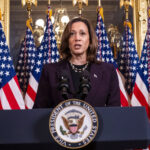Bengal cats are renowned for their striking resemblance to wild leopards, a feature that immediately captures attention. But beyond their exotic looks, a common question arises for potential owners: just how big do Bengal cats get? Understanding the size of a Bengal cat is crucial for anyone considering welcoming one of these captivating felines into their home. They are not just miniature leopards in appearance; their size also plays a significant role in their behavior, care needs, and overall suitability as a pet.
Understanding Bengal Cat Size
Bengal cats are generally categorized as medium to large-sized domestic cats. While they may not reach the imposing stature of breeds like Maine Coons, they are certainly more substantial than smaller breeds such as Siamese or Singapura cats. On average, a Bengal cat will weigh between 8 to 15 pounds (approximately 3.6 to 6.8 kilograms). Some larger males can even exceed this upper limit, tipping the scales at over 15 pounds. In terms of height, Bengal cats typically stand between 13 to 16 inches (about 33 to 40 centimeters) tall at the shoulder.
 Bengal cat with green eyes
Bengal cat with green eyes
It’s important to note that these figures are generalizations, and individual Bengal cats can vary in size. Just like humans, genetics, diet, and lifestyle all contribute to a cat’s final size. Factors such as lineage and breeding can also play a role. Bengals bred to emphasize their wild appearance might sometimes exhibit a slightly more muscular and larger build, inheriting more prominently from their Asian Leopard Cat ancestry.
Bengal Size Compared to Other Domestic Breeds:
To put Bengal Cat Size into perspective, comparing them to other popular domestic cat breeds can be helpful:
- Compared to Average Domestic Cat: Bengal cats are typically larger and more muscular than the average domestic shorthair or longhair cat. The average domestic cat weighs around 8 to 10 pounds, placing Bengals on the larger end of, or exceeding, this spectrum.
- Compared to Maine Coon: Maine Coons are giants in the domestic cat world, often weighing 13 to 18 pounds or more. Bengal cats are noticeably smaller and less bulky than Maine Coons.
- Compared to Siamese: Siamese cats are known for their slender and elegant build, typically weighing between 6 to 10 pounds. Bengals are significantly more robust and heavier than Siamese cats.
This medium to large size contributes to the Bengal’s athletic prowess and agility. They are not lap cats in the traditional sense, but rather active and dynamic companions.
Physical Attributes Influenced by Size
The size of a Bengal cat is intrinsically linked to several of their defining physical characteristics:
Muscular and Athletic Build: Their size is not just about weight; it’s about a lean, muscular physique. Bengal cats are notably athletic, and their medium to large frame supports their powerful muscles. This build allows for impressive agility, jumping ability, and the energetic playfulness they are known for. Their strength is evident in their movements, which are often described as graceful yet powerful.
 Bengal cat in a bookcase with green collar
Bengal cat in a bookcase with green collar
Body Proportions and Structure: Bengal cats have a well-proportioned body that contributes to their streamlined appearance. Their hind legs are slightly longer than their front legs, a trait inherited from their wild ancestors, which aids in their agility and powerful stride. This body structure, coupled with their size, gives them a distinctive, almost wildcat-like posture and movement.
Head and Frame: They possess a smallish, round head that is proportionate to their body size, adding to their overall balanced appearance. This head size, in relation to their medium to large frame, avoids any disproportionate or exaggerated features, maintaining a natural and wild aesthetic.
Temperament, Activity Levels, and Size
A Bengal cat’s size is not just a physical attribute; it also has implications for their temperament and care requirements:
Energy and Space Needs: Their medium to large size aligns with their high energy levels. Bengal cats are known for being incredibly active and playful. Their size means they require ample space to move, explore, and express their energy. Apartments can be suitable if enriched with vertical space and opportunities for play, but larger homes with access to safe outdoor areas are often ideal.
Interaction and Play: Their size is matched by their need for interaction and mental stimulation. Bengal cats thrive on engagement and playtime. Their physical presence is substantial, and they often demand attention and interaction from their owners. Activities that cater to their athletic nature, such as fetch, climbing, and puzzle toys, are essential to keep them happy and well-behaved.
 Bengal cat with large turquoise eyes resting on a white sheet
Bengal cat with large turquoise eyes resting on a white sheet
Handling and Care Considerations: While generally not demanding in terms of grooming due to their short coat, their size does mean that handling a Bengal cat, particularly for tasks like vet visits or nail trims, requires a confident and capable owner. Their strength and agility, linked to their size, means they need to be handled with assurance and care.
Bengal Cat Size Compared to Asian Leopard Cat Ancestors
The Bengal cat breed was created by crossing domestic cats with Asian Leopard Cats. While Asian Leopard Cats are wild felines, they are surprisingly similar in size to domestic cats, typically weighing between 8 to 15 pounds, and sometimes slightly larger. This size similarity is a key reason why Bengal cats are not drastically larger than average domestic breeds. The intention in breeding Bengals was to capture the exotic appearance of the Asian Leopard Cat, not necessarily to create a giant domestic cat breed. Therefore, Bengal cats retain a manageable domestic cat size while exhibiting the captivating wild look.
Conclusion: The Ideal Size for an Engaging Companion
In conclusion, Bengal cats are a medium to large-sized breed, embodying a perfect balance of domestic pet size with a wild, exotic charm. Their size contributes to their athletic build, agility, and energetic temperament, making them fascinating and engaging companions. Understanding their size helps potential owners appreciate not just their stunning appearance but also their needs for space, activity, and interaction. For those seeking a cat that is both visually striking and dynamically interactive, the Bengal cat, with its substantial yet manageable size, offers a truly unique feline experience.


